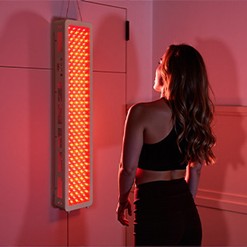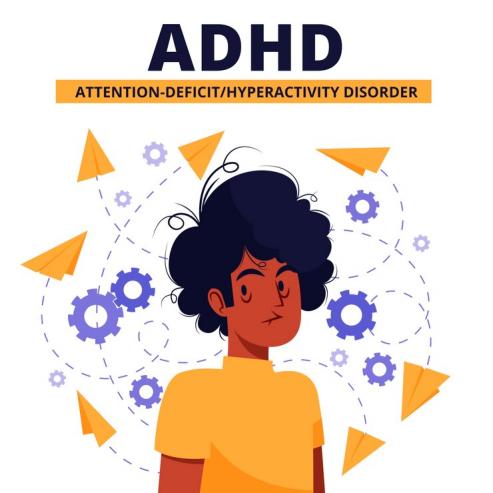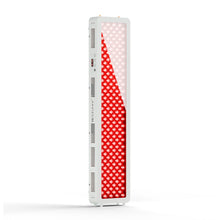Track athletes take a huge toll on their bodies during competition and training sessions. Athletes train best to push themselves to the extreme to get the best possible physical and mental states. Be it sprinting, jumping, throwing, or marathon running, an athlete faces strain in training and competing.
Red light therapy (RLT) has been gaining ground in recent years as the sports world discovers its magical touch in sports recovery and performance enhancement. It has been recognized as highly effective in helping fast recovery, reducing injury risks, and enhancing overall performance.

Understanding Track and Field Physical Demands
Different sporting events bring along their kinds of physical restrictions to track and field athletes. Unfortunately, with athletes with very high training frequencies, overuse injuries will definitely occur, and such an outcome will always lead to some form of fatigue.
Common Lower Body Stress Points
From the sprinters to the long-distance runners and the jumpers lower body has to carry all the destructive duties. The responsive pounding of the joints, such as the knees and ankles, together with overloaded muscles like the hamstrings and the calves can cause shin splints, tendinitis, and muscle strains among others in the aftermath. It is essential to keep proper recovery and injury prevention strategies in order to consistently maintain performing activities.
Upper Body Injury Prevention
The lower body is the most essential part of it, but equally important, especially for throwers and pole vaulters, is strength and mobility in the upper body. Shoulders, wrists, and elbows are the common pain points. Overuse injury may develop and hinder performance because of repetitive motions. Therefore, it includes upper-body-focused recovery solutions that are critical to these athletes.
Red Light Therapy in Athletic Performance
This therapy uses red and near-infrared lights to penetrate skin tissues and stimulate cellular activities. RLT has numerous advantages for sportspeople, such as enhanced circulation, lower inflammation, and increased mitochondrial functions[1].
Supporting Joint and Muscle Recovery
It is often difficult for athletes in track and field to fight against muscle soreness together with joints stiff after hard days of training.
This condition is helped by RLT by improving the blood flow to the affected areas and supplying them with oxygen and nutrients necessary for the recovery process. Oxidative stress is also reduced by this treatment, hence speeding up the healing process and decreasing time loss during training sessions.
Adding red light therapy speeds up recuperation among sportsmen hence enabling them to have steady performance levels. For instance, constant RLT sessions would be highly valuable for long jumpers who are trying to recover from repetitive joint impacts as well as for sprinters who are nursing hamstring injuries.
Enhancing Training Capacity
An athlete not only uses therapy to undergo recovery after a workout but conditioning is a secret of muscle readiness. Moreover, it enables a repair within cells while lowering muscle fatigue, and thus facilitates endurance and power output during workouts. This, therefore, equates to a workout that is harder and lasts longer, but with less risk for overtraining injuries.
RLT boosts muscle responsiveness and explosiveness for track athletes focusing on speed events like sprints. For those in endurance running, RLT lessens the accumulated effects of muscle fatigue, promoting optimum effort over time.

Targeted Treatment for Event-Specific Needs
A varied range of events comprises track and field. They vary in terms of physical requirements. RLT can be adapted specifically to meet the needs of different events.
Solutions for Running vs Throwing Events
Sprinters, marathon runners, and all people who are fond of sports will benefit from RLT. The lower body muscles are restored and the joints seem to work well. The therapy deals with issues related to calf muscles, periostitis, and IT band syndrome, allowing runners to keep the most efficient lower limb movements to minimize injuries.
In stark contrast, throwers put a lot of pressure on their upper body parts. The abrupt movement is responsible for generating injuries on shoulders and elbows, which are requisite parts for throwing. The RLT works on inflammation and hastens the recovery of tissues so that a thrower never loses muscle strength and precision.
Addressing Competition-Day Performance
On the days of events, these athletes must strive to exceed in performance under all the pressure. Pre-event relaxation training would increase blood circulation and reduce muscle stiffness so that they feel loose and prepared for the performance. The post-event sessions are meant for recovery, help reduce soreness, and prepare the body for any subsequent event or training session.
Holistic Benefits Beyond Physical Recovery
Besides the physical benefits, red light therapy addresses the mental and long-term wellness aspects of athletic success as well.
Mental Performance Support
Track and field athletes experience a lot of mental hurdles. Maintaining concentration during major competitions and then coping with the psychological toll of injuries are two major issues facing athletes. RLT has also been shown to cause endorphin release in the body which may boost mood and lower stress. It also improves sleep by regulating circadian rhythms, which is fundamental for recovery and peak cognitive performance.
Long-term Career Sustainability
It takes a lot of things for an athlete to have a successful career for a long time, not only temporary performance boosts. This is because RLT has the capability of decreasing chronic joint and muscle inflammation which eventually contributes to long-term joint and muscle health. It enables sports people to prolong their careers and maintain high standards by reducing damage caused by excessive use. Thus, RLT can be an essential instrument for remaining competitive among aged athletes and those recuperating from serious injuries to prevent complications that would lead to early retirement.
Conclusion
Red light therapy is the most potent and versatile tool to turn to for all the complex problems that track and field athletes put forth. These include anything from recovery to increased training capacity and improving mental health during a sporting career. RLT has more to offer than what recovery can provide. Incorporating red light into your program as a sprinter, marathoner, jumper, or thrower may just make the difference in propelling yourself to the next level of personal bests.
References
- Glass GE. Photobiomodulation: The Clinical Applications of Low-Level Light Therapy. Aesthet Surg J. 2021 May 18;41(6):723-738. doi: 10.1093/asj/sjab025. Erratum in: Aesthet Surg J. 2022 Apr 12;42(5):566. doi: 10.1093/asj/sjab396. PMID: 33471046.
- Borges LS, Cerqueira MS, dos Santos Rocha JA, Conrado LA, Machado M, Pereira R, Pinto Neto O. Light-emitting diode phototherapy improves muscle recovery after a damaging exercise. Lasers Med Sci. 2014 May;29(3):1139-44. doi: 10.1007/s10103-013-1486-z. Epub 2013 Nov 21. PMID: 24258312.















 Small
Small

 Moderate
Moderate

 Moderate
Moderate

 Moderate
Moderate

 Full
Full



